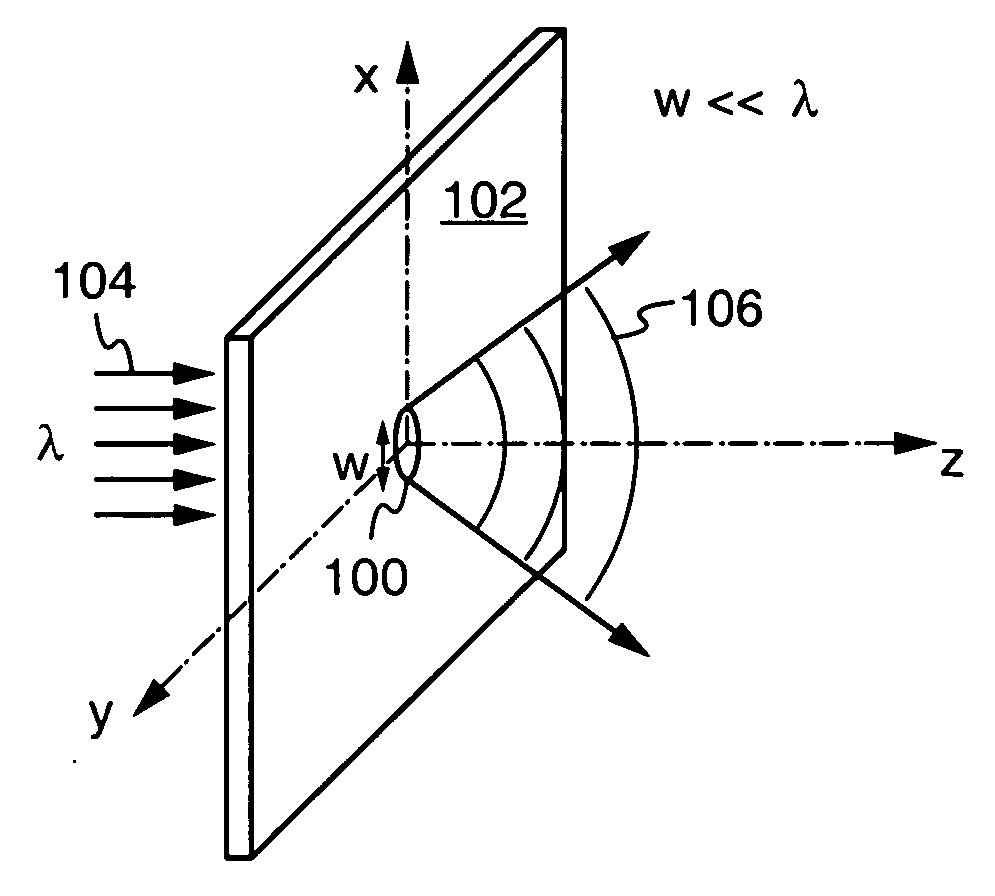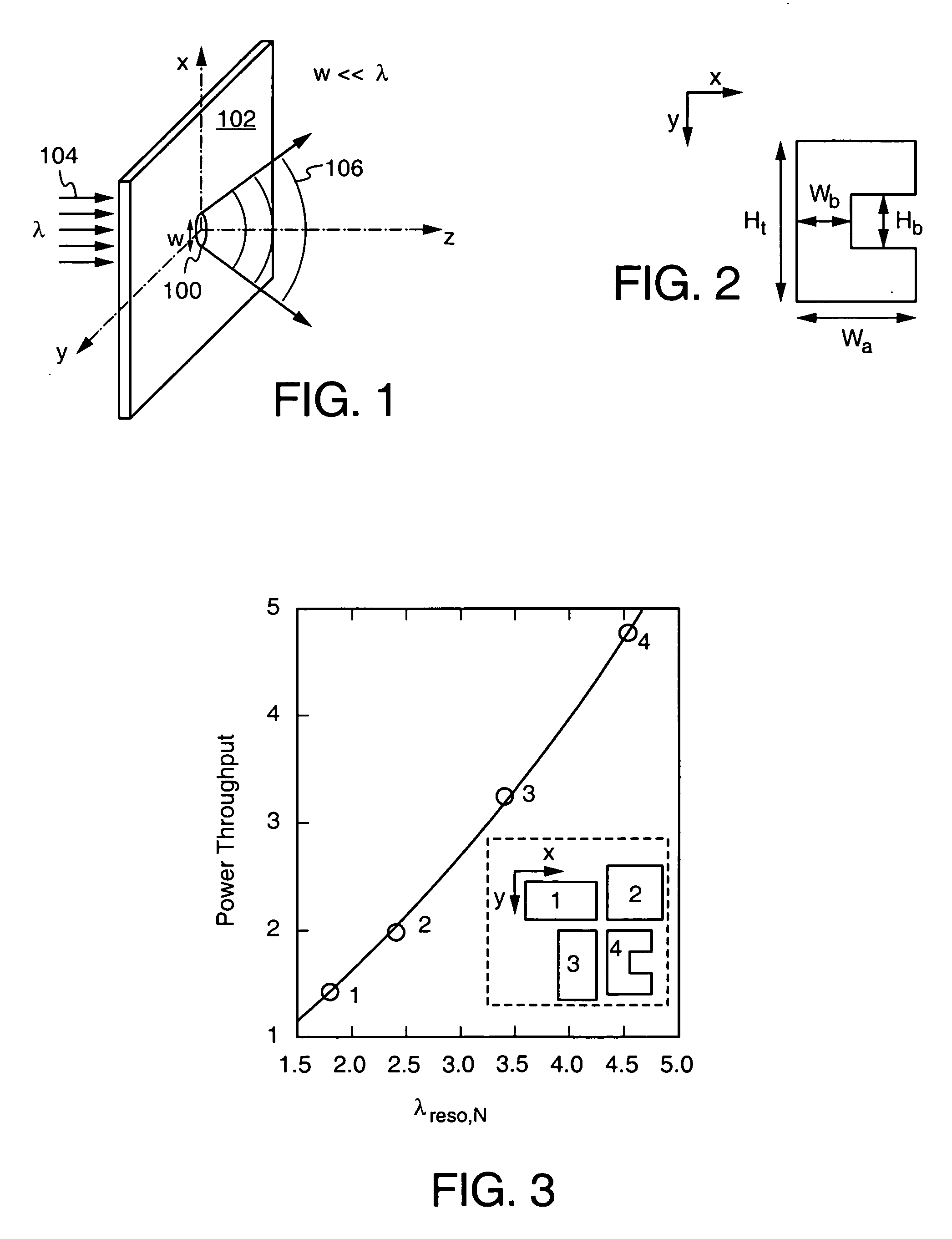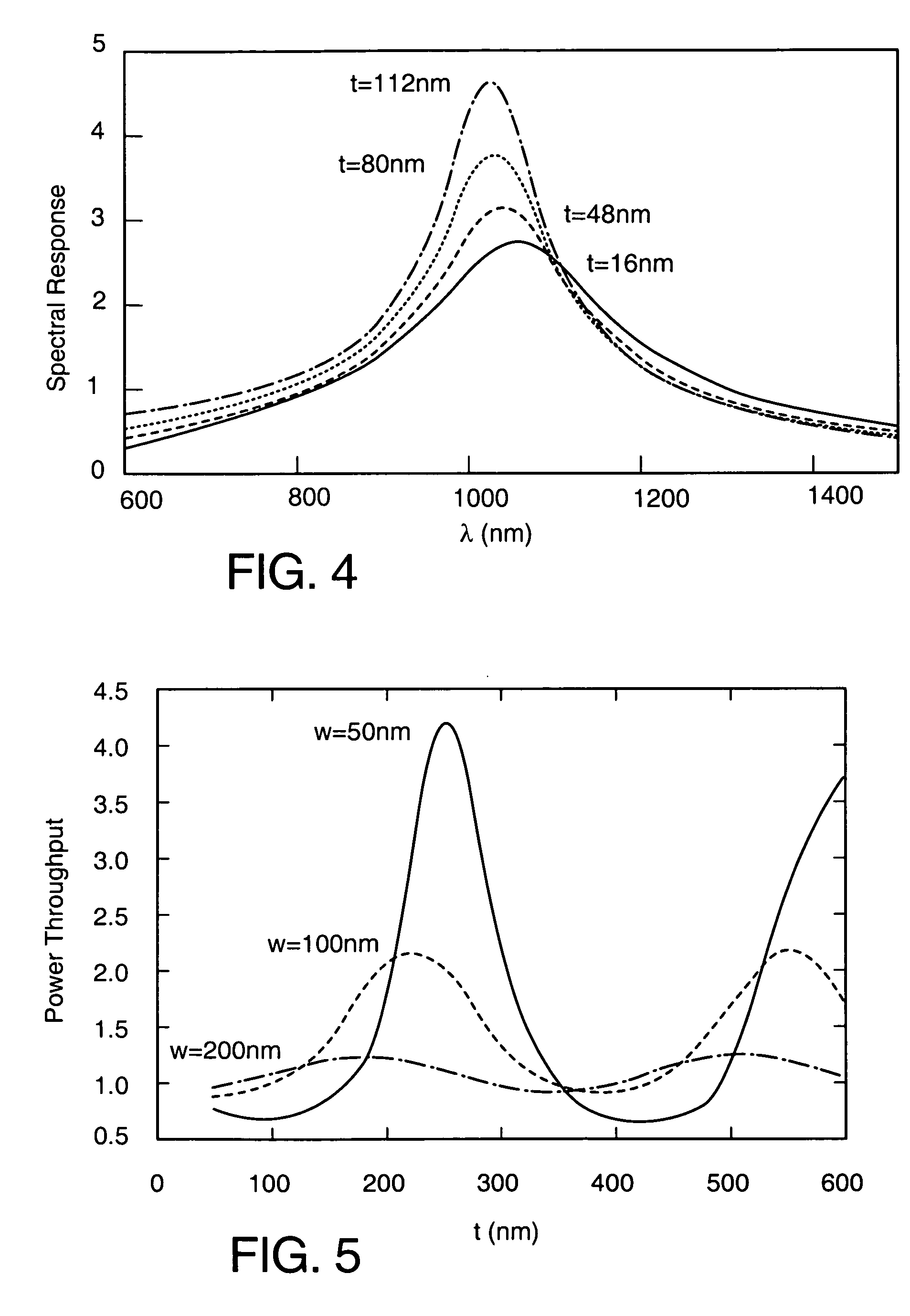Near-field sub-wavelength apertures
a sub-wavelength aperture and near-field technology, applied in the direction of optics, instruments, bundled fibre light guides, etc., can solve the problems of extremely low power transmission, limited spatial resolution of radiation, and only applies to far-field distances from the source, so as to improve the design and function of c-apertures, improve the performance of both transmission efficiency and spatial resolution, and deepen the understanding of their properties
- Summary
- Abstract
- Description
- Claims
- Application Information
AI Technical Summary
Benefits of technology
Problems solved by technology
Method used
Image
Examples
Embodiment Construction
[0024] The description of the present invention and its various embodiments is best understood by first defining certain technical terms that pertain generally to sub-wavelength apertures, such as the aperture shown in FIG. 1. An planar aperture is defined as an opening 100 in a locally planar surface 102 that allows radiation 104 incident on one side of the surface to pass from one side of the surface to the other, resulting in the transmission of radiation 106 through the aperture. The transmission cross-section σ1 is defined as the ratio of the total transmitted power Ptrans to the incident power flux density Sinc, i.e., σ1=Ptrans / Sinc. The power throughput is defined as PT=σ1 / A, where A is the aperture area. Without loss of generality, the coordinate system used in this description is selected so that the radiation 104 incident on the aperture propagates in the z direction, the x-y plane coincides with the plane 102 of the aperture, and the origin is located at the center of the...
PUM
 Login to View More
Login to View More Abstract
Description
Claims
Application Information
 Login to View More
Login to View More - R&D
- Intellectual Property
- Life Sciences
- Materials
- Tech Scout
- Unparalleled Data Quality
- Higher Quality Content
- 60% Fewer Hallucinations
Browse by: Latest US Patents, China's latest patents, Technical Efficacy Thesaurus, Application Domain, Technology Topic, Popular Technical Reports.
© 2025 PatSnap. All rights reserved.Legal|Privacy policy|Modern Slavery Act Transparency Statement|Sitemap|About US| Contact US: help@patsnap.com



